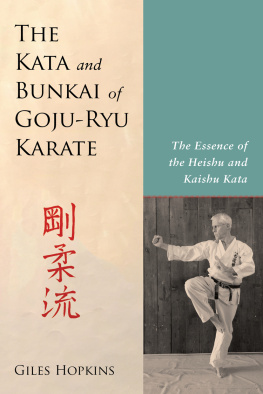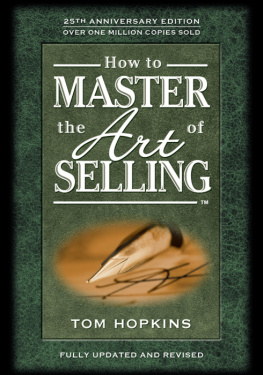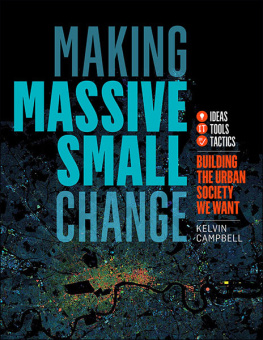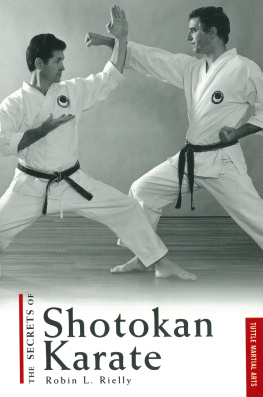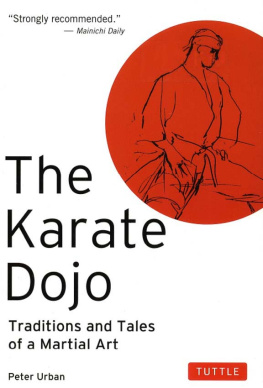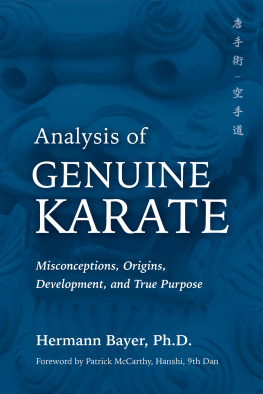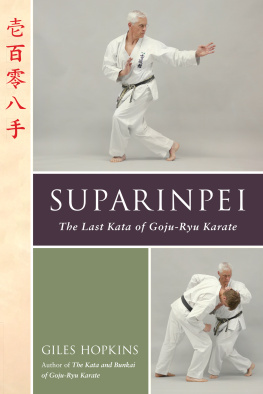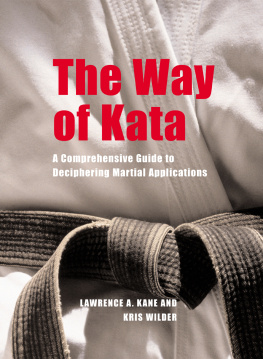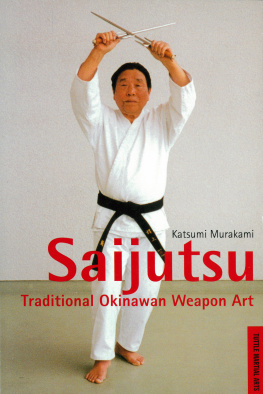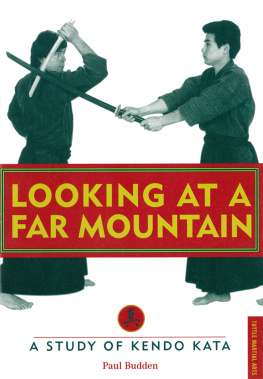
Copyright
Copyright 2018 by Giles Hopkins. All rights reserved. No portion of this book, except for brief review, may be reproduced, stored in a retrieval system, or transmitted in any form or by any meanselectronic, mechanical, photocopying, recording, or otherwisewithout written permission of the publisher. For information contact Blue Snake Books c/o North Atlantic Books.
Published by Blue Snake Books, an imprint of North Atlantic Books
Berkeley, California
Cover calligraphy by Sifu Liu Chang-I.
Cover photograph by Martha Hopkins.
Cover design by Howie Severson.
Book design by Happenstance Type-O-Rama.
Printed in the United States of America
The Kata and Bunkai of Goju-ryu Karate: The Essence of the Heishu and Kaishu Kata is sponsored and published by the Society for the Study of Native Arts and Sciences (dba North Atlantic Books), an educational nonprofit based in Berkeley, California, that collaborates with partners to develop cross-cultural perspectives, nurture holistic views of art, science, the humanities, and healing, and seed personal and global transformation by publishing work on the relationship of body, spirit, and nature.
North Atlantic Books publications are available through most bookstores. For further information, call 800-733-3000 or visit our websites at www.bluesnakebooks.com and www.northatlanticbooks.com.
PLEASE NOTE: The creators and publishers of this book disclaim any liabilities for loss in connection with following any of the practices, exercises, and advice contained herein. To reduce the chance of injury or any other harm, the reader should consult a professional before undertaking this or any other martial arts, movement, meditative arts, health, or exercise program. The instructions and advice printed in this book are not in any way intended as a substitute for medical, mental, or emotional counseling with a licensed physician or healthcare provider.
Library of Congress Cataloging-in-Publication Data
Names: Hopkins, Giles, author.
Title: The kata and bunkai of goju-ryu karate : the essence of the heishu and kaishu kata / Giles Hopkins.
Description: Berkeley, CA : North Atlantic Books, [2018] | Includes bibliographical references and index.
Identifiers: LCCN 2017028006 (print) | LCCN 2017049297 (ebook) | ISBN 9781623172008 (e-book) | ISBN 9781623171995 (pbk.)
Subjects: LCSH: Karate.
Classification: LCC GV1114.3 (ebook) | LCC GV1114.3 .H66 2018 (print) | DDC 796.815/3--dc23
LC record available at https://lccn.loc.gov/2017028006
North Atlantic Books is committed to the protection of our environment. We partner with FSC-certified printers using soy-based inks and print on recycled paper whenever possible.
To my teachers and fellow students.
Preface
There is a pattern and structure to all things. Only we cant see it. Our job is to discover that pattern and structure and work within it, as part of it.
Richard Flanagan, The Narrow Road to the Deep North
Something about it vaguely reminded me of an old Woolworths lunch counter. There were two or three tables, covered in checkered vinyl, and a small counter with stools. Stout older women stood or sat behind the counter, watching a small television tuned to a sumo tournament. We had eaten here often in our first weeks in Okinawa and had come to refer to it as Ni-kai. It was one of the first places Matayoshi sensei had taken us when we arrived. We followed him through the department store, past the butchers aisle with its pigs heads, past the kimonos and the perfumes, to the lunch counter on the second floor. Matayoshi sensei ordered green tea. A fly was buzzing around us, hovering over the teacups. Matayoshi sensei picked up a pair of ohashi from a container on the tablethe cheap unfinished wooden chopsticks that come with take-out orders and that you have to pull apart. Ah, I thought, Im in Japanthe legend of Musashi, who could pick flies out of the air with chopsticks. Id seen the movie and read the book. This was Shinpo Matayoshi, the famous ancient weapons art (kobudo) master, a Living Treasure in Okinawa. But Matayoshi didnt take the chopsticks out of the wrapper. He hardly interrupted his conversation with my teacher, in fact, but as the fly briefly stopped its flight, coming to rest on the checkered vinyl tablecloth, he swatted it with the unwrapped ohashi. The fly was dead and swept off the table. Not the stuff of legends, but infinitely more practical.
Acknowledgments
The reasons one practices any martial art may be idiosyncratic and varied, but the practice of martial arts owes much to others, and not just to ones teachers but to all of the people one has had occasion to train with because martial arts cannot be truly learned without others. I have learned a great deal from my teachers, most notably Kimo Wall, Gibo Seiki, and Matayoshi Shinpo, but also from Sifu Liu Chang I and a number of different Taiji teachers.
I have also gained valuable insight from my peers and fellow students, particularly Bill Diggle, long-time student and training partner, who also helped with the photographs for this book, and Ivan Siff, with whom much of this journey into an understanding of Goju-ryu kata began so many years ago.
I would also like to extend my thanks and appreciation to Michael DeMarco, publisher of the Journal of Asian Martial Arts, who encouraged me to write about the martial arts by publishing my early essays on Goju kata and bunkai, and the editors and production staff at North Atlantic Books for their kind help and assistance, especially Erin Wiegand, Louis Swaim, and Christopher Church.
And lastly, of course, I would like to sincerely thank my family, especially my wife Martha, for their patience and understanding.
Introduction: Kata and Bunkai
On a hot July evening in 1986 , I was standing in the dojo (martial arts training hall) listening to Matayoshi Shinpo explain one of the postures of Kakuho, a form (kata) from the Kingai-ryu system. We had been walking up and down the floor in crane stance, the toes of one foot curled under, ready to throw small pebbles or sand into an attackers face, arms out to the side like wings. Matayoshi had come down earlier to watch kobudo training. When we had finished, we began training some of the empty-hand kata of Matayoshis family system and our own Goju-ryu. It was already late in the evening. Sometimes Matayoshi would stop and try to explain something with the few English words he knew and then laugh.
You no show, he would say. OK? That summer, sitting in an ice cream shop in downtown Naha, Matayoshi had heard a particularly strident American pop song. The singers voices were harsh and nasal as they repeated the chorus, Show me; show me. Matayoshi had asked what the words meant, and from then on, he used the words frequently, and laughed.
At the moment, however, he was trying to explain how one of the moves in the kata was used. Although the application seemed obvious, we couldnt figure out what he was trying to get across. With Matayoshis peculiar collection of a few dozen English words or phrases and our handful of Japanese words, it was like some hilarious game of charades. Matayoshi would bend down and pretend to pull up clumps of imaginary grass (we later realized).
Then he would rear back with both arms up in front of his body, elbows in, forearms vertical, wrists bent so that the hands, held above the head, formed claws. Then he would stop and hold one hand up with index finger and thumb spread apart.
Next page
